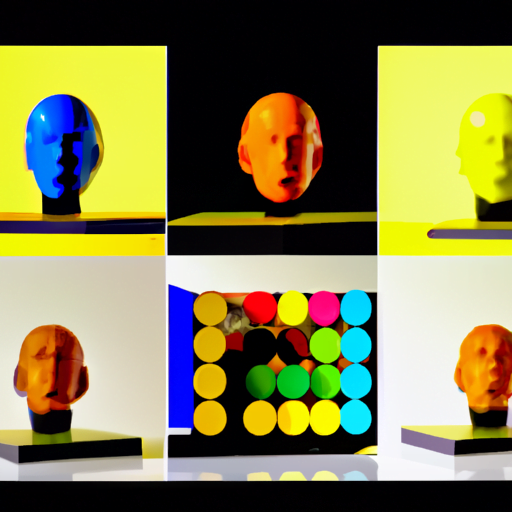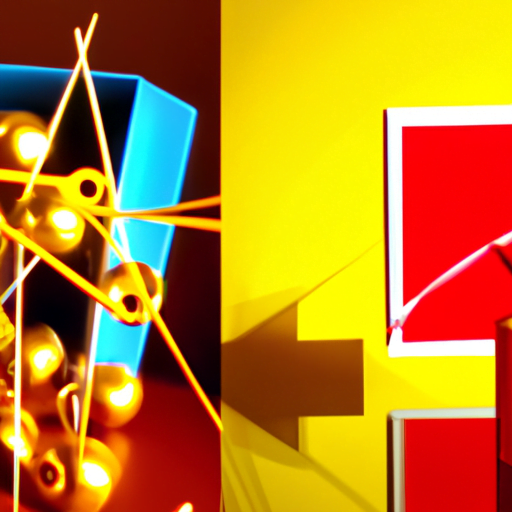
-
Table of Contents
Exploring the World of Kinetic Sculptures and Interactive Art

Art has always been a medium for self-expression and creativity. Over the years, artists have pushed the boundaries of traditional art forms, exploring new ways to engage and interact with their audience. One such form is kinetic sculptures and interactive art, which combines movement, technology, and viewer participation to create a unique and immersive experience. In this article, we will delve into the world of kinetic sculptures and interactive art, exploring its history, techniques, and impact on the art world.
The History of Kinetic Sculptures
Kinetic sculptures have a rich history that dates back to the early 20th century. The term “kinetic art” was coined by the artist Naum Gabo in 1920, referring to artworks that incorporate movement. However, the roots of kinetic sculptures can be traced back even further to the Futurist movement in the early 1900s, which embraced the concept of motion and speed in art.
One of the pioneers of kinetic sculpture was Alexander Calder, an American artist known for his mobiles. Calder’s mobiles consisted of suspended elements that moved with the slightest breeze, creating a sense of balance and harmony. His work paved the way for future artists to explore the possibilities of movement in sculpture.
In the 1960s, the Kinetic Art movement gained momentum, with artists like Jean Tinguely and George Rickey creating large-scale kinetic sculptures that captivated audiences. Tinguely’s “Homage to New York” was a self-destructing sculpture that caught the attention of the art world, showcasing the potential for movement and unpredictability in art.
Techniques and Materials
Kinetic sculptures utilize various techniques and materials to achieve movement and interactivity. Here are some common techniques used by artists:
- Mechanical Systems: Many kinetic sculptures incorporate mechanical systems, such as gears, motors, and pulleys, to create movement. These systems can be controlled manually or through sensors and programming.
- Wind and Water: Some kinetic sculptures harness natural elements like wind and water to create movement. Wind-powered sculptures, like Calder’s mobiles, rely on air currents to generate motion. Water sculptures, on the other hand, use flowing water to create dynamic patterns and shapes.
- Electronics and Sensors: With advancements in technology, artists can now incorporate electronics and sensors into their kinetic sculptures. These sensors can detect the presence of viewers or respond to environmental changes, triggering specific movements or interactions.
When it comes to materials, kinetic sculptures can be made from a wide range of materials, including metal, wood, plastic, and even recycled materials. The choice of material depends on the artist’s vision and the desired aesthetic and functionality of the sculpture.
Interactive Art: Engaging the Viewer
Interactive art takes the concept of kinetic sculptures a step further by actively involving the viewer in the artwork. It blurs the line between the artist and the audience, creating a dynamic and participatory experience. Here are some examples of interactive art:
- Touch-Sensitive Art: Some interactive artworks respond to touch, allowing viewers to physically interact with the piece. For example, Rafael Lozano-Hemmer’s “Pulse Room” features a room filled with light bulbs that pulse in sync with the viewer’s heartbeat when they touch a sensor.
- Projection Mapping: Projection mapping is a technique that uses projectors to transform objects or spaces into dynamic displays. Artists can create interactive installations by projecting images that respond to the viewer’s movements or gestures.
- Virtual Reality (VR) Art: VR art immerses viewers in a virtual world, allowing them to interact with the artwork using VR headsets and controllers. Artists can create virtual environments where viewers can explore and manipulate objects in real-time.
Interactive art not only engages the viewer on a physical level but also encourages active participation and emotional connection. It challenges the traditional notion of art as something to be observed passively, transforming it into a shared experience between the artist and the audience.
The Impact of Kinetic Sculptures and Interactive Art
Kinetic sculptures and interactive art have had a profound impact on the art world, pushing the boundaries of what is considered art and how it is experienced. Here are some key ways in which they have influenced the art scene:
- Engagement and Accessibility: Kinetic sculptures and interactive art have made art more accessible to a wider audience. By inviting viewers to actively participate, they break down the barriers between the artwork and the viewer, making art a more inclusive and engaging experience.
- Technological Advancements: The integration of technology in kinetic sculptures and interactive art has led to significant advancements in the field. Artists are constantly exploring new technologies and techniques to create more immersive and interactive experiences.
- Public Art Installations: Kinetic sculptures and interactive art are often showcased in public spaces, allowing people to encounter art in their everyday lives. These installations can transform public spaces into vibrant and interactive environments, fostering a sense of community and creativity.
- Emotional Impact: The combination of movement, interactivity, and viewer participation in kinetic sculptures and interactive art can evoke strong emotional responses. They have the power to captivate and inspire, leaving a lasting impression on the viewer.
Conclusion
Kinetic sculptures and interactive art have revolutionized the art world, offering new ways to engage and interact with art. From the early mobiles of Alexander Calder to the cutting-edge VR installations of today, artists continue to push the boundaries of what is possible. By incorporating movement, technology, and viewer participation, kinetic sculptures and interactive art create immersive and transformative experiences that challenge our perception of art. Whether it’s a wind-powered sculpture in a park or a virtual reality artwork in a gallery, these art forms have the power to captivate, inspire, and connect us on a deeper level.
